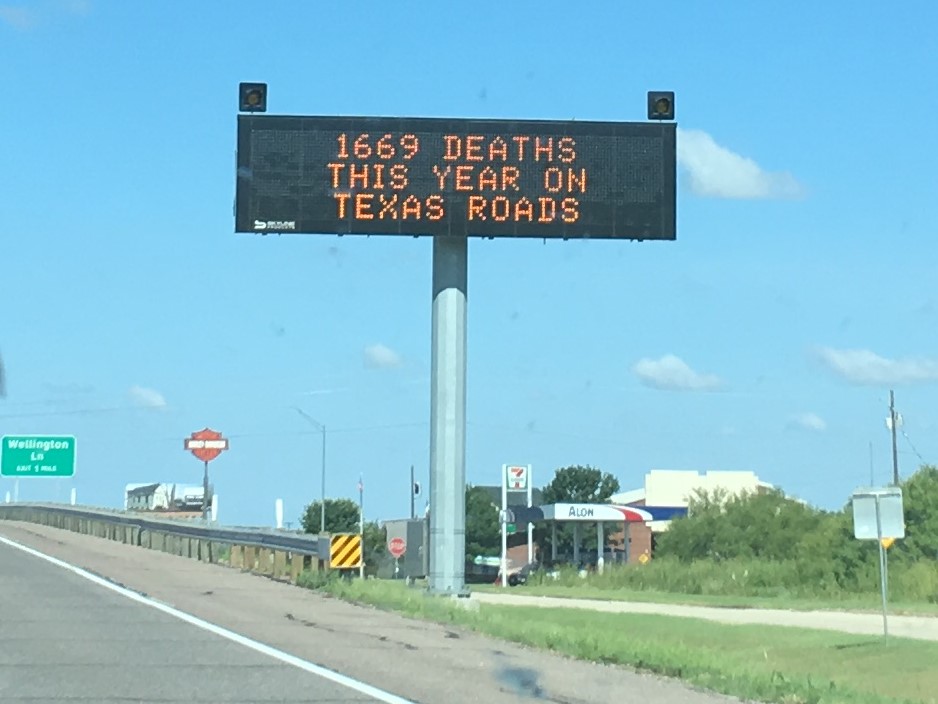 Psychology
Psychology
The Dark Side of Nudges
Among other methods, governments use highway message signs to encourage responsible driving. We find that displaying year-to-day roadside fatality counts leads to an immediate increase in traffic crashes. We argue that the statistics distract drivers at precisely the moments when they should focus on the road.

How can you get someone to change their behavior in a socially desirable way? One method employed by governments and policy experts worldwide is the use of behavioral interventions or “nudges”: if you can provide a useful piece of information (e.g., benefits of washing hands, value of social distancing, health risks associated with smoking cigarettes, etc.) at the time individuals make a decision (e.g., in the bathroom, at a concert, on the cigarette label), they will more likely make the socially desirable choice. But to be effective, guidebooks recommend that nudges “seize people’s attention”.
In a recent article published in Science, we studied an increasingly common behavioral intervention: displaying safety messages on highway dynamic message signs. The thinking goes that since these signs have “down time” when not displaying more relevant information (e.g., travel times), such messages might be a low-cost means of “nudging” individuals toward safer driving habits. We focused on a specific safety message, the year-to-date statewide fatality number. Surprisingly, we found that displaying fatality numbers actually increases crashes.
The stated intent of displaying this statistic is the hope that its sobering, shocking nature will motivate motorists to slow down. Tennessee began displaying fatality numbers in 2012, and since then at least 27 other states and one other country have displayed these statistics at least once (and often repeatedly). But until now, we could find no effort to quantify the effectiveness of such messages.
We evaluated the usage of these safety messages in Texas, where, for institutional reasons, they were displayed only one week a month (the week before the monthly board meeting for the Texas Transportation Commission) between August 2012 and May 2021. We refer to these weeks as “campaign weeks”. This rotation provided the necessary variation to estimate what would have happened had the fatality messages not been displayed. We can then estimate their effectiveness by comparing the frequency of hourly crashes downstream of dynamic message signs during campaign weeks against the other three weeks of the month. Importantly, we control for location, hour, month, and day-of-week specific attributes as well as local weather conditions. We further use as a control sample the pre-August 2012 sample period, where we expect and find no effect during these pseudo campaign weeks.
Our proposed explanation for the counterintuitive increase in crashes is that the messages grab too much attention. To be effective, behavioral interventions need to capture some, but guidebooks don’t discuss the simultaneous need to consider its cost. Drivers are already engaged in a risky task: driving 60-80 mph (100-130 km/h) on a freeway. Reminding drivers of that risk can plausibly take their attention away from the act of driving and interrupt automatic responses to changes in traffic conditions. In support of this explanation, we find that the negative effects of fatality messages concentrate in more complex road segments—locations where a temporary distraction will likely cost more. We further find that the effect correlates with the number of deaths displayed, such that displaying a larger fatality number results in a larger subsequent increase in crashes. This too is consistent with the notion that more sobering and attention-grabbing statistics can be just that—too attention grabbing.
Our research highlights the need for a closer examination of behavioral interventions and raises awareness about the cost and drawbacks of seizing attention. We argue that ideas, even seemingly “good ideas,” should be tested before being implemented more generally.
Original Article:
Hall, J. D., Madsen, J. M. (2022). Can behavioral interventions be too salient? Evidence from traffic safety messages. Science, 376(6591). https://doi.org/10.1126/science.abm3427Next read: A novel mechanism of metabolic regulation of blood pressure by Saroj Chakraborty , Bina Joe
Edited by:
Dr. Margaux Héritier , Senior Scientific Editor
We thought you might like
Collateral damage: antibiotics disrupt the balance in the gut
Jun 2, 2016 in Microbiology | 3.5 min read by Katri KorpelaCan active learning in college classrooms disrupt patterns of under-representation in STEM?
Mar 18, 2021 in Psychology | 3 min read by Elli Theobald , Scott FreemanWarm waters hide in the unlikeliest of places – under the Arctic sea ice
Jul 31, 2019 in Earth & Space | 3.5 min read by Mary-Louise TimmermansMore from Psychology
Sharing a political ideology predicts more similar brain activity
Sep 1, 2023 in Psychology | 3.5 min read by Daantje de Bruin , Oriel FeldmanHallHow do people see, simplify, and solve problems?
Aug 25, 2023 in Psychology | 3.5 min read by Mark HoWomen are human too, but not according to the internet
Jul 21, 2023 in Psychology | 4 min read by April BaileyDeaf to arguments? How conspiracy beliefs shape opposition to wind farms
Jun 12, 2023 in Psychology | 3 min read by Kevin WinterCan Training Make Policing Fairer and More Effective?
May 22, 2023 in Psychology | 3 min read by David Weisburd , Cody TelepEditor's picks
Trending now
Popular topics


